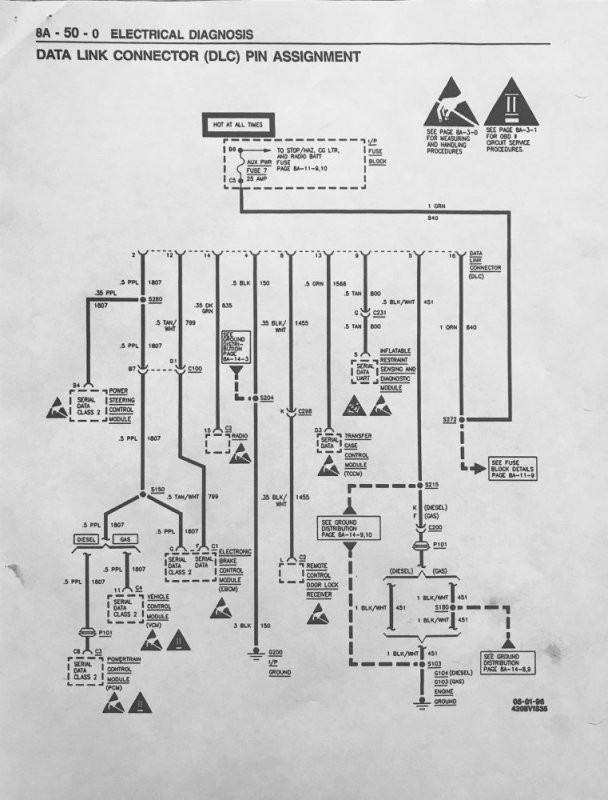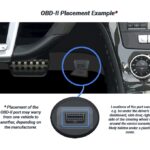Facing issues connecting your OBD2 scanner to a 1999 Chevy Suburban? You’re not alone. This article dives into a troubleshooting journey for a 1999 Suburban that refuses to communicate with an OBD2 scanner, despite the scanner working perfectly on other OBD2 compliant vehicles. We’ll explore the diagnostic steps taken, potential voltage irregularities found, and questions arising during the process, all centered around the question: Is 99 Suburban Obd2 even the right standard to be checking?
OBD2 Scanner Troubles with a 1999 Suburban
The problem began with a standard INNOVA scanner, equipped with both OBD1 and OBD2 capabilities. This scanner worked flawlessly on a 1996 Silverado, a 1997 Acura, and even newer 2017 VW Golfs. This confirmed the scanner’s functionality. However, when connected to a 1999 Chevrolet Suburban, it failed to establish a connection.
To isolate the issue, a computer swap was performed. The Suburban’s computer was placed in the Silverado, and in this configuration, the scanner successfully communicated. Conversely, the Silverado’s computer, when installed in the Suburban, also failed to connect. This pointed towards a problem within the Suburban itself, not the computer.
Diagnostic Steps and Voltage Anomalies
Using the GM Repair manual checklists for troubleshooting “no communication” issues, the diagnostic process began. The manual, while primarily written for the Tech 2 scanner, provided guidance for “CKT 800, no commo on the UART Data Line” or “CKT 1870 No Commo on Class-2 Data Line” scenarios. It’s important to note that while the manual is for slightly older models (1997), the troubleshooting principles are expected to be similar for a 1999 Suburban.
The first step, according to the manual, was to check for an open in the purple (PPL) wire (1807) if the Powertrain Control Module (PCM) was inaccessible. Testing for connectivity between Data Link Connector (DLC) pin 2 and the PCM’s #3 connector (C8 Pin out) showed good continuity.
Further circuit testing followed, checking grounds, connectivity, voltages, and ohms at specified pin outs and components. Most readings were within acceptable ranges, but voltage anomalies were detected on two wires. The purple wire at connector 2 (top row, second from the left) showed 2.4 VDC, and the tan wire at connector 9 (bottom row, 1st one on the left) registered 4.5 VDC. The repair manual states that “Greater than 1 VDC = repair the wire,” indicating excessive voltage on these lines. For comparison, the same circuit tests on the working 1996 Silverado showed voltages below 1VDC on all corresponding wires.
The Mystery of Excess Voltage and BPMV
The crucial questions now become: where is this excess voltage originating, and what is the cause? The troubleshooting process led to another acronym: BPMV. Its meaning was unclear initially, with possibilities ranging from humorous guesses to more plausible automotive terms like “Break Pressure Modulator Valve.” The manual indicated that one of the splices for the purple (PPL) wire is located on the ‘Engine Harness approximately 13 cm into the BPMV Breakout.’
This reference to BPMV suggests a potential link between the braking system components and the OBD2 communication issue. Further investigation into the wiring diagrams and repair manuals is needed to understand the role of the BPMV and trace the source of the excess voltage on the data communication lines.
Continuing the Diagnostic Journey
While the GM repair manual checklists have provided a starting point, the voltage anomalies and the introduction of the BPMV component suggest a deeper dive is necessary. Understanding the wiring schematics, specifically around the BPMV and its connection to the data communication lines, will be critical in pinpointing the source of the problem and resolving the OBD2 scanner connectivity issue on this 1999 Suburban. The question of is 99 suburban obd2 compatible is seemingly answered by the fact it should be, making this troubleshooting exercise all the more important to solve.

